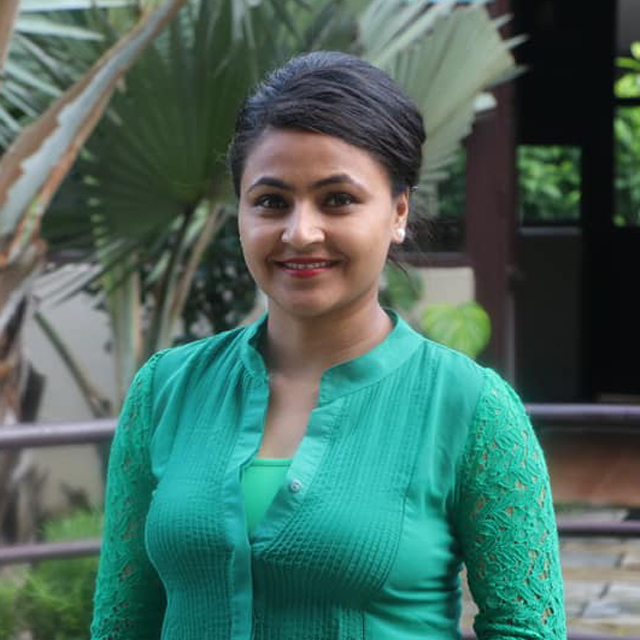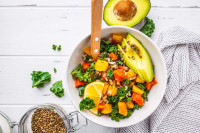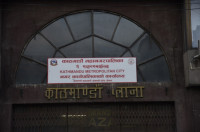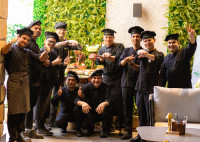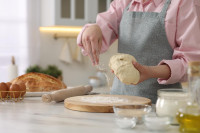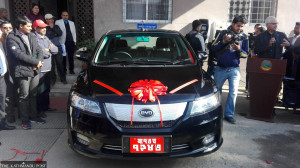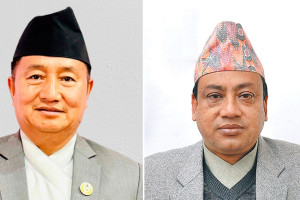Food
Mubarak Biryani: slow-cooking a 65-year biryani legacy
The Nepalgunj restaurant is famed for its food, but it was not always smooth sailing for the family behind the biryani..jpg&w=900&height=601)
Madhu Shahi
Mubarak Ali Ansari and his entire family are ready to start their day as soon as the alarm clock rings at 6am. The family of 10—consisting of two daughters, five sons, Mubarak, his wife, and his sister—all work synergistically to prepare the constituent essentials to prepare biryani.
The family restaurant, Mubarak Biryani, is now firmly established as one of Nepalgunj’s food institutions and people flock to the restaurant for its famous mutton biryani from as early as 9am.
While Mubarak Ali Ansari and his sons are the face of the business, slinging plates of Biryani as soon as they’re ready, the magical biryani touch comes from the main cook—Mubarak’s wife. Mubarak Biryani is known for its fragrance and distinct flavour, and has thus created a brand that wafts throughout the country. The biryani here is hygienic, less oily and consists of good quality meat.
Unlike other shops, Mubarak Biryani only serves biryani from 9am to 2pm. Mubarak says the extra time after 2pm gives him plenty of lee-way to select quality meat for the following day.
“While we serve less, we serve quality biryani,” says Mubarak.
Unlike many of its counterparts across the country, this restaurant’s mutton is lean. Mubarak’s discerning eye, and fastidious and hours-long meat-selection means the meat has hardly any fat. After selecting the meat, Mubarak cleans the meat for four hours, then prepares the spices. The spices for the famous dish are distinct from others in the city. What exactly they are, and what makes them different, is a secret between the husband and wife.
They seem fastidious when it comes to the cooking method, and the amount of spice used, as the establishment remains true to a generations-long recipe.
While the restaurant is undoubtedly successful, it has had a long and bumpy history. It all started in India, where Mubarak’s father and grandfather cooked for a British Officer on a Farukawad railway. Mubarak says his father, Khudawaks Ansari, used to help his grandfather with the cooking. “But, one day, my grandfather had a fight with the officer. So, my father and grandfather left and moved to Kanpur. It was there that my father started his own biryani shop,” says Ansari. “He had good business over there.”
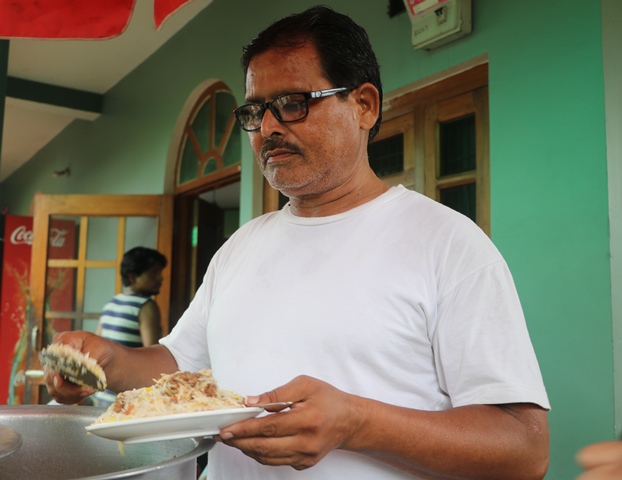
Mubarak’s father was even able to cover the expenses of his own marriage with the money he earned from his business. But after Mubarak was born, his father moved to Baharaich in Uttar Pradesh and opened up another biryani business. But the business was a flop, so they moved once more. This time to Nepalgunj.
Mubarak’s father opened in Eklaini Bazaar around 65 years ago. It was not the bustling bazaar it is today, so it took a while for the business to take off. The shop, a small hut, had no flashy signs or advertising—just a beautiful aroma wafting into the street. That aroma eventually led to the small business’s success.
He remembers preparing 30kg of biryani in a single hour when demand was high, and it was pretty cheap too. According to Mubarak, a plate of biryani, kebab and roti-tarkari, sold for just 10 paisa back then. Like all things, however, some things have changed. The price started hiking up slowly, a plate of biryani fetches Rs250 now, and people’s eating habits are slowly changing too. Lately, because of the sheer amount of choice people have when it comes to food, it has been a challenge to attract customers of the younger generation, said Mubarak. “This generation seems to love spicy foods,” says Ansari. “We tend to meet the need along with equal attention to the health of the customers.” Now, on average, 10 to 15kgs of biryani is sold each day. But his family’s biryani legacy continues.
Mubarak’s father used to prepare biryani without meat, but the son had a vision—for a meatier variety and new digs. He shifted the shop from Eklaini Bazaar to his own home, and the recipe and ingredients have changed. While the dish used to be prepared with exclusively Nepali rice, more specifically, samajira rice, now they’re using a hybrid variety that requires a bit of extra love.
While some things have changed, it seems the clientele is not that different from decades ago. “I try to make my customers return to my shop once they taste the biryani of here. That happens because of quality food and warm hospitality,” says Mubarak.
Local Shyam Thapa have been visiting Mubarak Biryani for almost 25 years. Thapa reminisces about all the times he had to eat biryani while standing, when the shop was in a hut.
“There was a different type of pleasure to eating Biryani back then; standing alongside the road when you were hungry,” says Thapa. “Although a new space has been constructed, there isn’t the same amount of excitement as before. But the taste and quality of biryani remains great.”
Because he has such loyal customers, and they’re never going to stop coming, Mubarkak likes to focus on first-timers to his shop. Mubarak says his old customers are like family, so he can trust them to visit him regularly. But, he says, in order to attract new customers, he must make them feel welcome.
“Old customers are already accustomed to the taste of the biryani. I especially focus on new customers to make them feel homely here,” said Mubarak. And, if he’s successful in attracting the next generation of biryani-loving folk, maybe the restaurant will live on for another 65 years.




 28.39°C Kathmandu
28.39°C Kathmandu

